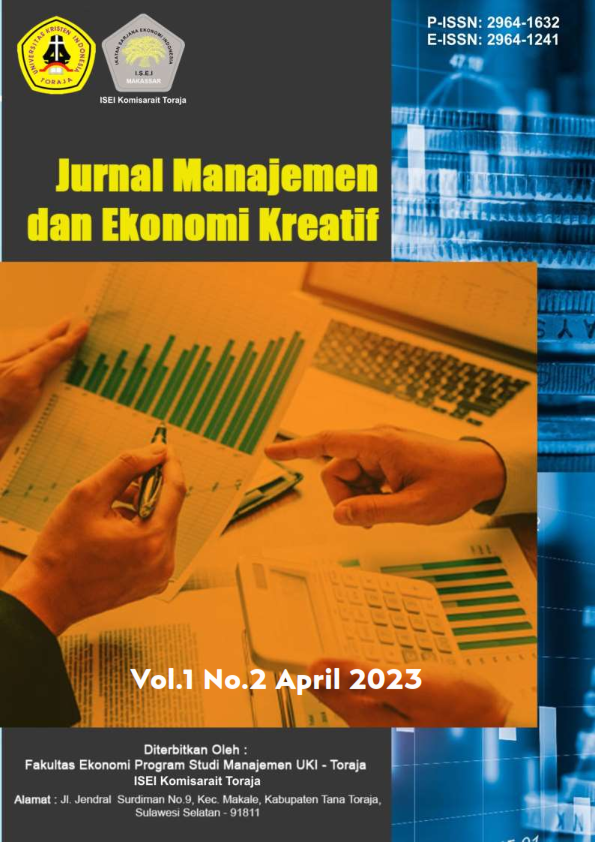Peningkatan Sumber Daya Manusia Di Sekolah Menengah Pertama Islam Bakti Asih Melalui Pemanfaatan Teknologi Informasi Dan Komunikasi
DOI:
https://doi.org/10.59024/jumek.v1i2.84Keywords:
Information and Communication Technology (ICT), Education, Human resources, Learning Media.Abstract
The use of information and communication technology (ICT) in education has become an important topic in optimizing human resources in schools. This article aims to provide an overview of the benefits and challenges of utilizing ICT in education, and how ICT can improve the quality of human resources in schools. The research method used in this article is a literature review conducted by studying references related to the use of ICT in education. The results and discussion show that the use of ICT in education can provide significant benefits, such as facilitating teachers in presenting teaching materials, providing access to more diverse information and learning materials, and improving interactions between teachers and students. However, there are challenges and barriers in utilizing ICT, such as accessibility problems to ICT infrastructure and difficulties in operating ICT devices. Therefore, efforts are needed to improve the accessibility and infrastructure of ICT in schools, as well as providing training and developing the competencies of teachers and students in operating ICT devices. In conclusion, this article presents useful information for the development of education in Indonesia, especially in terms of the utilization of ICT as a means to improve the quality of human resources in schools. With appropriate efforts, the use of ICT in education can provide more optimal and sustainable benefits for the improvement of human resources in schools.
References
Afandi, A. (2018). The Use of Technology in Learning English for Beginner Students. English Education Journal, 9(1), 1-9.
Arikunto, S. (2013). Prosedur Penelitian Suatu Pendekatan Praktik (Edisi Revisi ke-6). Jakarta: PT Rineka Cipta.
Ary, D., Jacobs, L. C., & Razavieh, A. (2002). Introduction to Research in Education (6th ed.). Belmont, CA: Wadsworth/Thomson Learning.
Basuki, I., Sutama, & Setiawan, A. (2018). Pengaruh Media Pembelajaran Berbasis Teknologi Informasi Terhadap Hasil Belajar Siswa Kelas XI IPA 1 SMA Negeri 1 Tuban. Jurnal Ilmiah Pendidikan Fisika Al-BiRuNi, 7(1), 73-79.
Borg, W. R., & Gall, M. D. (1983). Educational Research: An Introduction (4th ed.). New York: Longman.
Creswell, J. W. (2014). Research Design: Qualitative, Quantitative, and Mixed Methods Approaches (4th ed.). Los Angeles, CA: Sage Publications.
Fathoni, A. (2018). Pengaruh Penggunaan Media Pembelajaran Berbasis Teknologi Informasi Terhadap Hasil Belajar Siswa Pada Mata Pelajaran Fisika Kelas X SMA Muhammadiyah 2 Surakarta Tahun Ajaran 2016/2017. Jurnal Ilmiah Pendidikan Fisika Al-BiRuNi, 7(2), 131-137.
Kemendikbud. (2016). Panduan Pelaksanaan Penggunaan Teknologi Informasi dan Komunikasi (TIK) dalam Pembelajaran. Jakarta: Kemendikbud.
Kurniawan, Y., & Mulyono, M. (2017). Pengaruh Penggunaan Media Pembelajaran Berbasis Teknologi Informasi Terhadap Hasil Belajar Siswa Kelas X Pada Materi Hidrokarbon Di SMA Negeri 1 Bandar. Jurnal Ilmiah Pendidikan Fisika Al-BiRuNi, 6(2), 201-208.
Mardiyana, M., & Wijayanti, L. M. (2017). Pengaruh Pemanfaatan Media Pembelajaran Berbasis Teknologi Informasi Terhadap Hasil Belajar Matematika Siswa Kelas VII SMP Negeri 1 Kudu Kabupaten Trenggalek. Jurnal Pendidikan Matematika, 2(2), 64-73.
Miles, M. B., & Huberman, A. M. (1984). Qualitative Data Analysis: A Sourcebook of New Methods. Beverly Hills, CA: Sage Publications.








